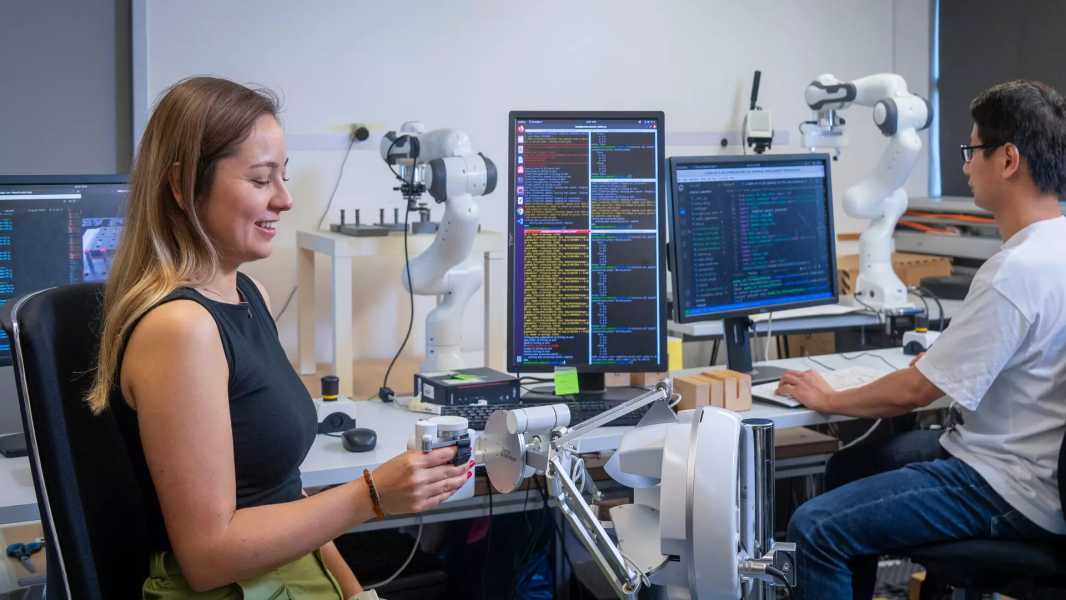
(Image credit: Qi Yang/Getty Images)
The next step in the evolution of the Internet could be digital transmission of tactile sensations, which could change remote surgery and open up a whole new era of online gaming.
Scientists have developed a standard called “Haptic Codecs for the Tactile Internet” (HCTI) that allows tactile information to be transmitted in both directions over a network using data packets that do not exceed reasonable sizes and do not require significant bandwidth. Details were published on June 14 by the Institute of Electrical and Electronics Engineers (IEEE) Standards Association.
Currently, transmitting haptic feedback over a remote connection – for example, when controlling a robotic arm on the spot – requires sending data packets in both directions 4,000 times per second. While this allows for realistic feedback and reliable data transmission, such high demands on the network transmitting the packets pose significant challenges, said lead author Ekkehard Steinbach, professor of media technology at the Technical University of Munich (TUM), in a commentary.
To address this issue, the HCTI standard applies compression and reduces the frequency to 100 times per second, which Steinbach says is “close to the limit of human perception.”
The HCTI standard optimizes the control loop between the sender and receiver, and compresses information in a similar way to how audio or images are transmitted over the Internet, but in a two-way format.
“The new codec is a kind of JPEG or MPEG for tactile sensations,” Steinbeck said, adding, “As with JPEG, MP3, and MPEG, many applications have emerged since the standards were published. I expect the same with our new tactile codecs.”

Scientists have found a method to make the Internet tactile. Transmission through touch
Codecs compress information sent over the Internet, removing data that is beyond human perception. In the case of JPEG and MP3 files, this means removing visual and audio elements that humans are unlikely to notice. This results in a loss of high fidelity, such as in colors or high-frequency sounds, but allows for much smaller, easier-to-transmit data packets.
However, this process is mostly a one-way transmission. Since haptic feedback requires two-way interaction and high precision to work effectively over a distance, it requires significant bandwidth and low-latency connections. This is not a big problem when controlling robots on-site, but remote control poses challenges.
Although information travels at the speed of light over fiber optic networks, it still travels a maximum of 300 kilometers in one millisecond (ms). In terms of pure transmission time, this means that a packet of tactile data would take 30 ms to arrive
Sourse: www.livescience.com





